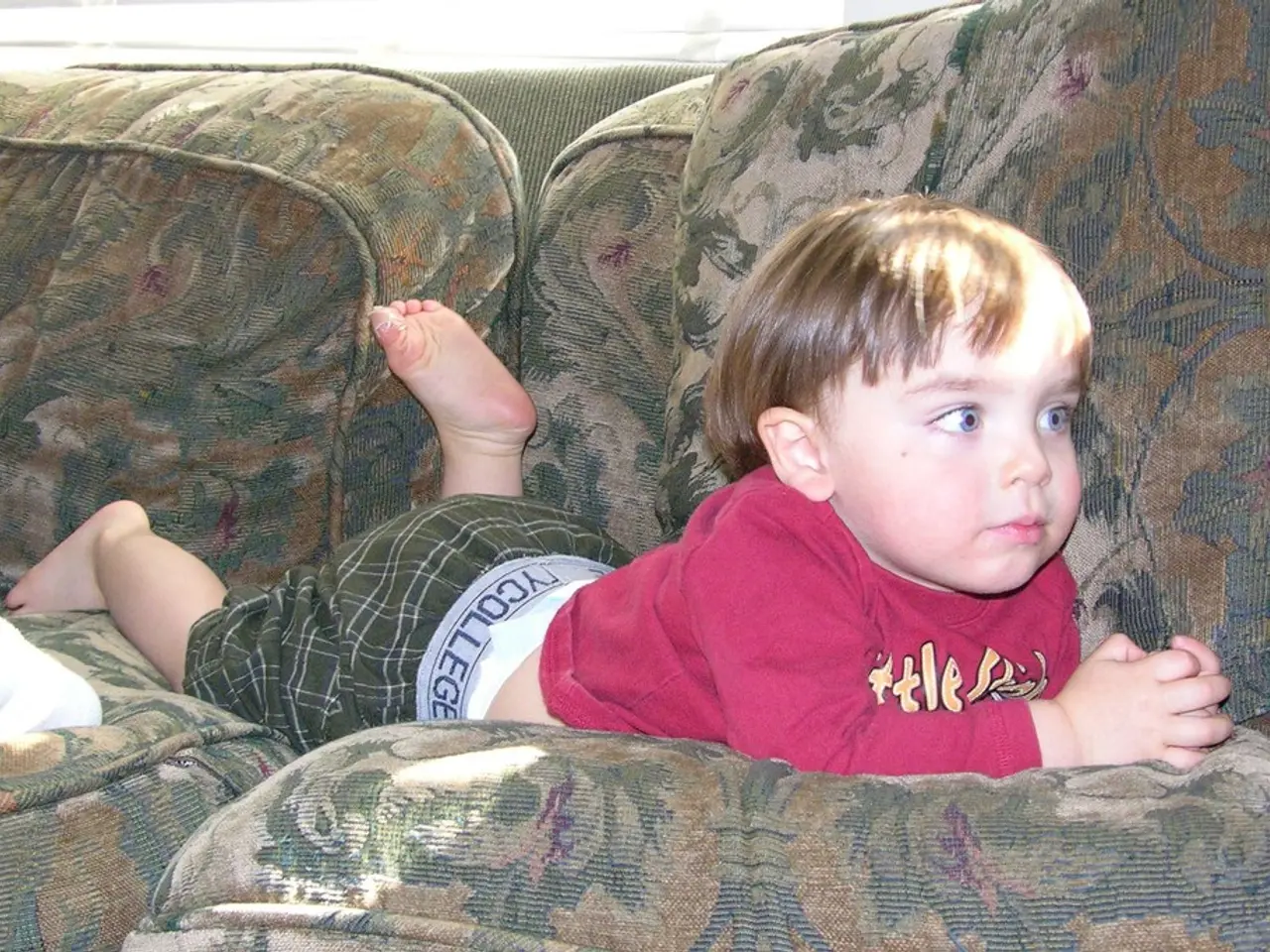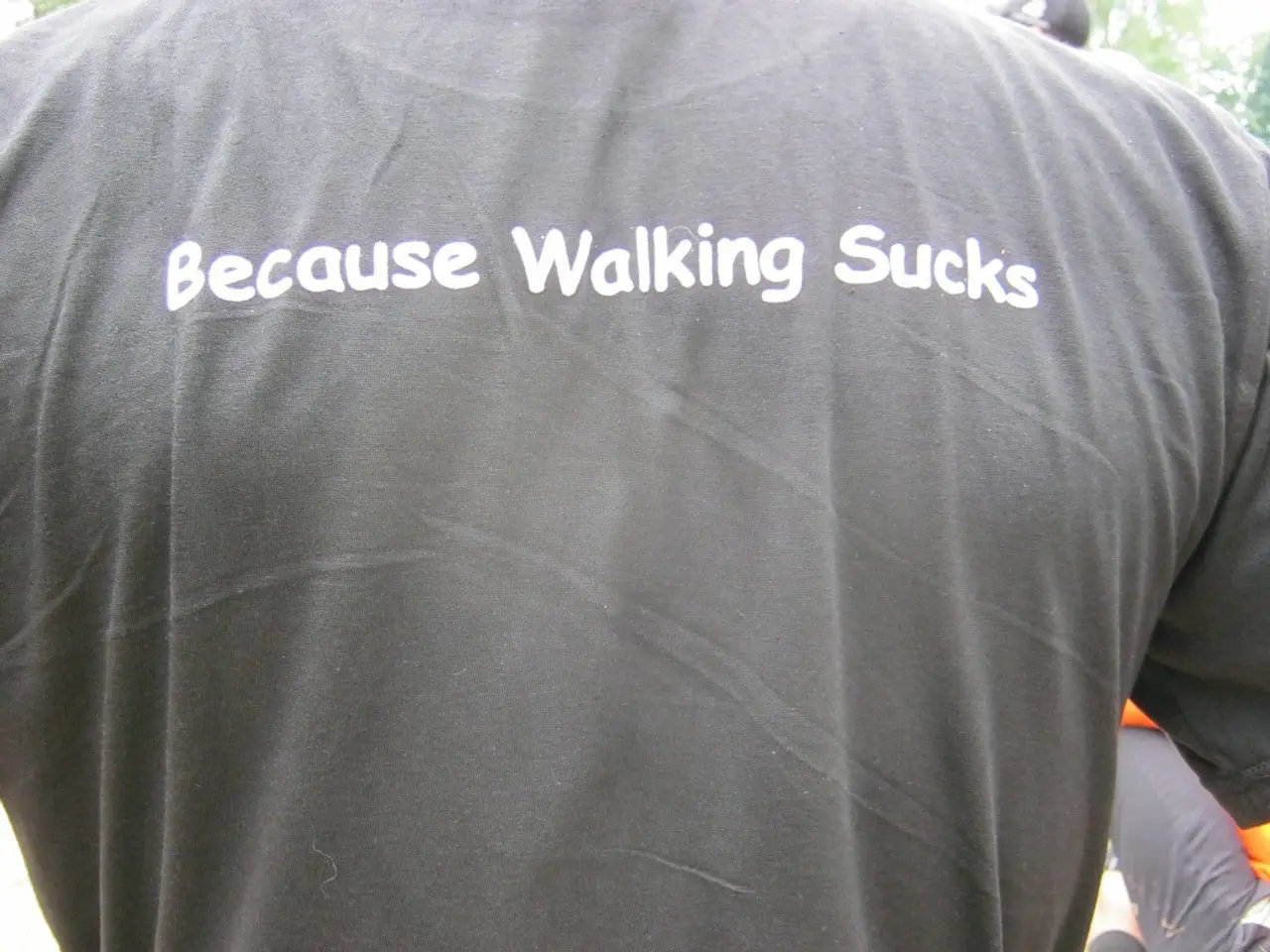Genetic Disorder Insights: Root Causes, Signs, Therapies, and Additional Information (Regarding Beckwith-Wiedemann Syndrome)
=====================================================================================
Beckwith-Wiedemann Syndrome (BWS) is a rare overgrowth condition that affects certain chromosomes in a fetus. This condition can cause a child to grow significantly larger than their peers, and while it may lead to various signs and symptoms, the majority of children with BWS lead normal lives with no serious medical problems associated with the condition.
Characteristic Features of BWS
People with BWS may display a variety of physical features. Some common signs include:
- Large body size
- Creases or pits in the ears
- Large tongue
- High or low birth weight
- Enlarged organs, such as the liver or kidney
- Abdominal wall abnormalities, such as umbilical hernia
- Pink or red facial birthmarks
- Cleft palate
- Overgrowth on one side of the body
Diagnosis and Causes
BWS can be diagnosed through physical examination, medical history, family history, laboratory testing, and DNA analysis from both the child and parents. The causes of BWS are complex, often resulting from abnormal regulation of genes on chromosome 11.
Common genetic alterations associated with BWS include:
- Loss of methylation at IC2 (KCNQ1OT1): This silences the CDKN1C gene, leading to loss of growth suppression and overgrowth, and is the most frequent cause, affecting around 50-60% of cases.
- Paternal Uniparental Disomy (UPD) of 11p15: This causes increased IGF2 and decreased CDKN1C expression, promoting overgrowth, and is present in approximately 20-25% of cases.
- Gain of methylation at IC1: This causes overexpression of IGF2, a growth-promoting factor, and affects around 5-10% of cases.
- CDKN1C gene mutations: These disrupt the gene that normally restrains growth and are present in about 5% of cases.
- Chromosomal abnormalities: These are less common, affecting less than 1% of cases.
Risk and Treatment
Although BWS involves genes, it does not automatically pass from parent to child. Only about 15% of affected people have a family history of the condition.
Treatment for BWS focuses on managing symptoms and complications, such as monitoring low blood sugar, treating macroglossia, and surgical treatment for abdominal wall abnormalities. People with BWS may also be at risk for rare tumors like adrenocortical tumor, Wilms' tumor, neuroblastoma, hepatoblastoma, rhabdomyosarcoma, and hemangioma.
It is important for parents of a child with BWS to contact a gene specialist to determine the cause and individual risk factors. While there is no known prevention for BWS, understanding the condition and its causes can help in managing the symptoms and providing the best care for affected individuals.
References
[1] International Beckwith-Wiedemann Syndrome Consortium, et al. (2015). The molecular basis of Beckwith-Wiedemann syndrome: a comprehensive review. Journal of Medical Genetics, 52(10), 603-611. doi: 10.1136/jmedgenet-2015-103362.
- Despite the complex genetic causes of Beckwith-Wiedemann Syndrome, most individuals with the condition lead normal lives, free from serious medical problems.
- The loss of methylation at the IC2 location (KCNQ1OT1) is the most common genetic alteration associated with BWS, turning off the CDKN1C gene and leading to overgrowth.
- Paternal Uniparental Disomy (UPD) of 11p15, which causes increased IGF2 and decreased CDKN1C expression, is present in approximately 20-25% of cases.
- Gain of methylation at IC1 causes overexpression of IGF2, another growth-promoting factor, affecting around 5-10% of cases.
- CDKN1C gene mutations, which disrupt the gene that normally restrains growth, are present in about 5% of cases.
- To manage symptoms and complications of BWS, treatments might include monitoring low blood sugar, treating macroglossia, or surgical treatment for abdominal wall abnormalities.
- People with BWS may also be at risk for various rare tumors like adrenocortical tumor, Wilms' tumor, neuroblastoma, hepatoblastoma, rhabdomyosarcoma, and hemangioma.
- In fitness-and-exercise, skin-care, mental-health, nutrition, eye-health, workplace-wellness, and cardiovascular-health, regular therapies-and-treatments are crucial for overall health-and-wellness, especially for those affected by chronic-diseases like BWS.




